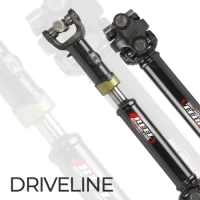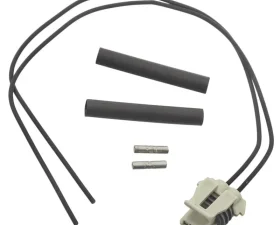Evaporative System
A/C High Pressure Cut-off Switch Connector Standard Ignition S-1170
A/C High Pressure Cut-off Switch Connector Standard Ignition S-1224
A/C High Pressure Cut-off Switch Connector Standard Ignition S-1923
A/C and Heater Blower Motor Switch Connector Standard Ignition S-804
A/C and Heater Blower Motor Switch Connector Standard Ignition S-850
Evaporative Systems
The Evaporative Emission Control System (EVAP) is used to prevent gasoline vapors from escaping into the atmosphere from the fuel tank and fuel system. The EVAP system usually requires no maintenance, but faults can turn on the Check Engine light and prevent a vehicle from passing an OBD II plug-in emissions test.
The OBD II EVAP monitor on 1996 and newer vehicles runs diagnostic self-checks to detect fuel vapor leaks, and if it finds any (including a loose or missing gas cap), it will set a fault code and turn on the Check Engine light. However, the EVAP monitor only runs under certain operating conditions. This may create a problem for the vehicle owner if his vehicle must be given an OBD II plug-in emissions test and the monitor has not completed.
Sealing the fuel tank is not as simple as it sounds. For one thing, a fuel tank must have some type of venting so air can enter to replace fuel as the fuel is sucked up the fuel pump and sent to the engine. If the tank were sealed tight, the fuel pump would soon create enough negative suction pressure inside the tank to collapse the tank. On older EVAP systems, the tank is vented by a spring-loaded valve inside the gas cap. On newer vehicles, it is vented through the EVAP canister.
The major components of the evaporative emission control system include:
- Fuel tank, which has some expansion space at the top so fuel can expand on a hot day without overflowing or forcing the EVAP system to leak.
- Gas cap, which usually contains some type of pressure/vacuum relief valve for venting on older vehicles (pre-OBD II), but is sealed completely (no vents) on newer vehicles (1996 & newer). NOTE: If you are replacing a gas cap, it MUST be the same type as the original (vented or nonvented).
- Liquid-Vapor Separator, located on top of the fuel tank or part of the expansion oerflow tank. This device prevents liquid gasoline from entering the vent line to the EVAP canister. You do not want liquid gasoline going directly to the EVAP canister because it would quickly overload the canister's ability to store fuel vapors. The liquid-vapor separator is relatively trouble-free. The only problems that can develop are if the liquid return becomes plugged with debris such as rust or scale from inside the fuel tank; if the main vent line becomes blocked or crimped; or if a vent line develops an external leak due to rust, corrosion, or metal fatigue from vibration.
Vivid Racingcarries high-performance parts for almost any need. Click these links to choose from our selection ofBody Kits,Big Brake Kits,Seats,Custom WheelsandTires,Engine Parts,Exhaust Parts,Intakes,Suspension,andTransmission Parts.
Buying fromVivid Racingis the best choice you can make. We back every part we sell with our guarantee of satisfaction.
Buy online or give one of our world-class sales professionals a call at 1-480-966-3040. If you don't see what you are looking for, Call Us.
We can help.Vivid Racingwas voted #1 in customer service nationwide!
Hands-On Experience and Professionalism is what makes us the best.
LOOKING FOR OEM PARTS?We can help.
Are you tired of paying overly inflated prices that the dealers charge for their parts?Vivid Racingcan save you up to 60% off the dealers' prices. Click here to visit ourOEM PARTS STORE.

.jpeg?q=90&p=thumb&w=200&h=200)











.jpeg?q=90&p=thumb&w=40&h=40) Brakes
Brakes  Driveline
Driveline  Electronics
Electronics  Handlebars & Controls
Handlebars & Controls  Package Deals
Package Deals  Wheel Accessories
Wheel Accessories  Wheels by Vehicle
Wheels by Vehicle  Tools and Maintenance
Tools and Maintenance  Universal & Repair
Universal & Repair  Vivid Racing Gear
Vivid Racing Gear 











